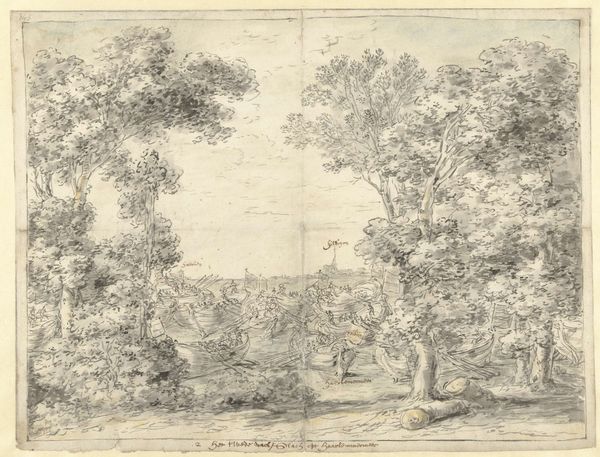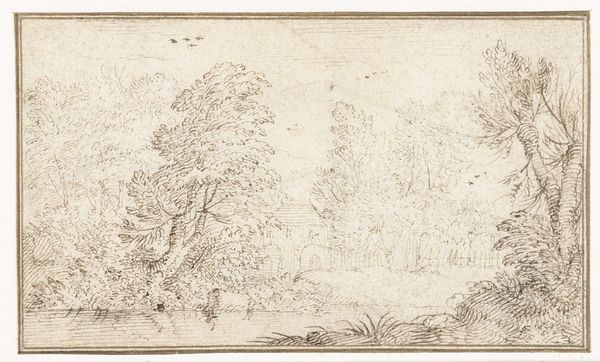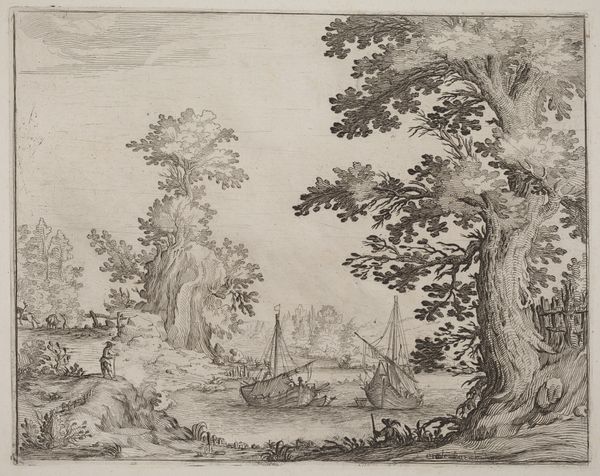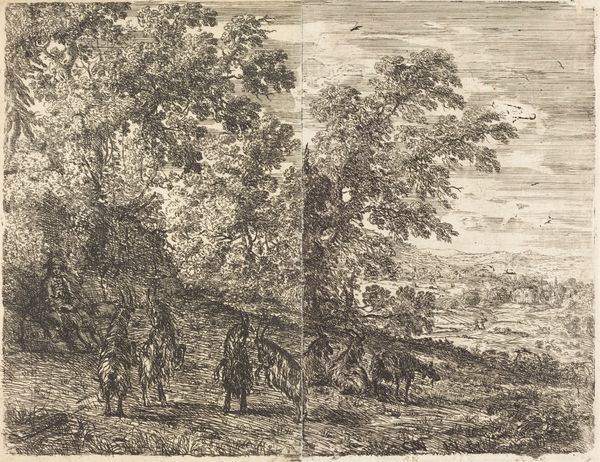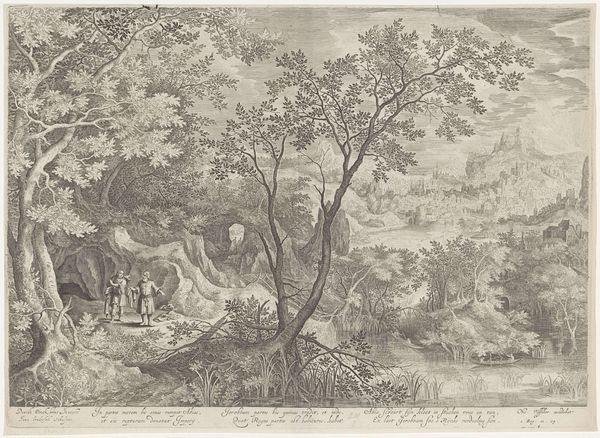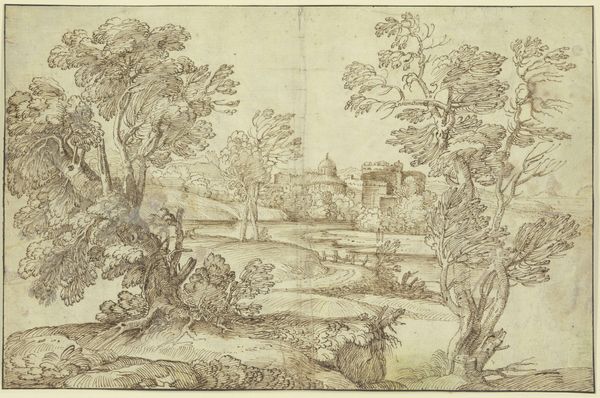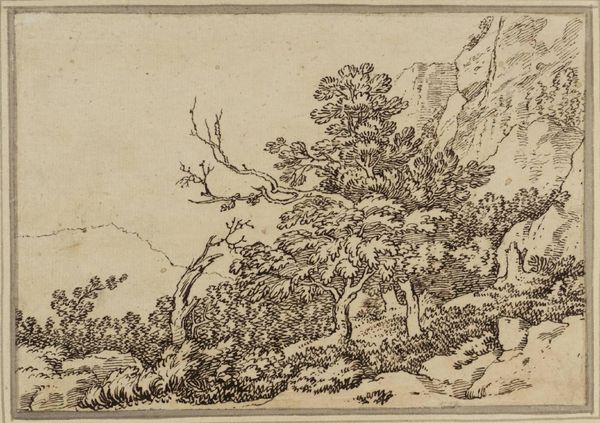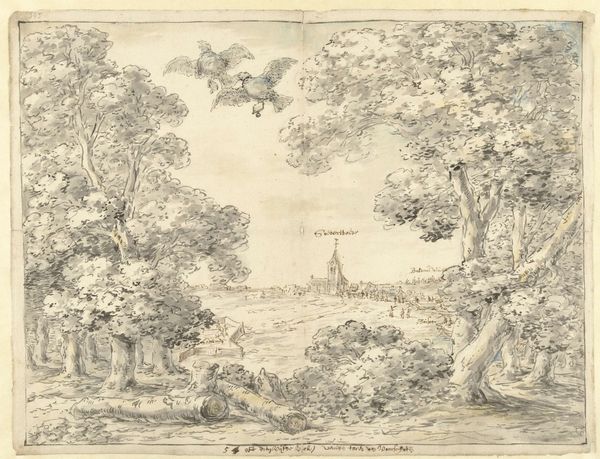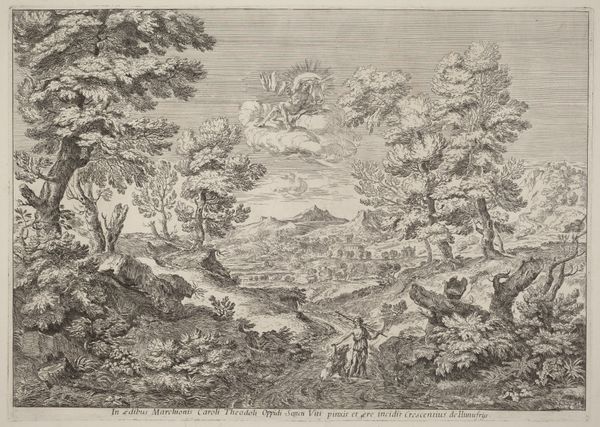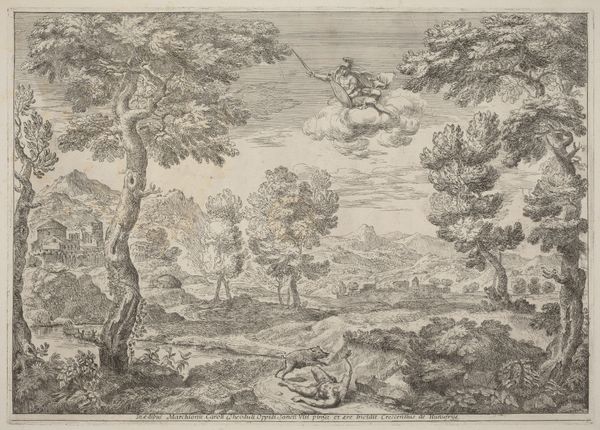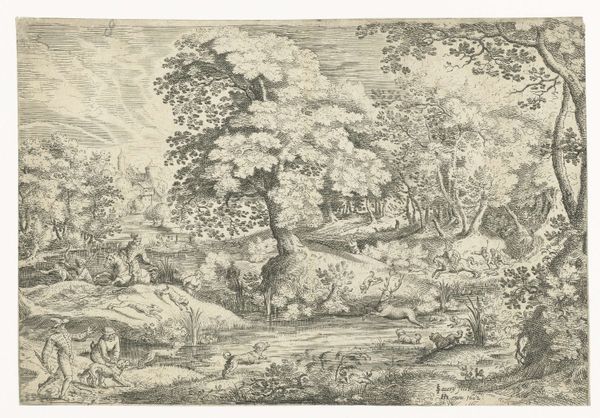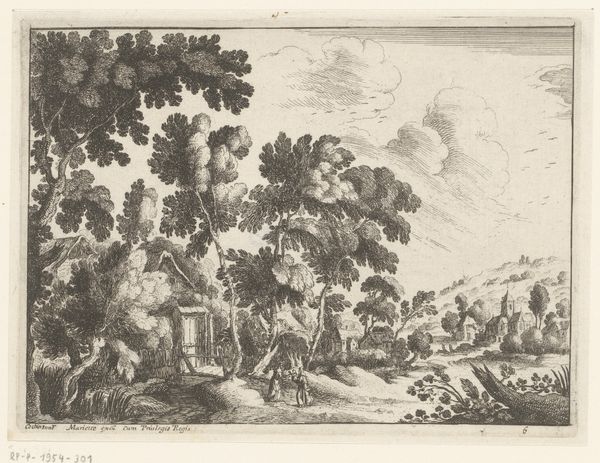
drawing, watercolor, ink, pen
#
drawing
#
baroque
#
pen sketch
#
pencil sketch
#
landscape
#
watercolor
#
ink
#
pen work
#
pen
#
watercolour illustration
#
history-painting
#
watercolor
Dimensions: height 320 mm, width 418 mm
Copyright: Rijks Museum: Open Domain
Editor: This is "Slag op de Mookerheide, 1574," a work in pen, ink and watercolor by Leonaert Bramer, created sometime between 1606 and 1674. It's at the Rijksmuseum. It’s quite dynamic. You can almost hear the clashing of steel and horses. What do you see in this piece? Curator: I see a stark depiction of violence embedded within a lush, indifferent landscape. The chaotic swirl of figures, obscured by the very nature intended to provide refuge, speaks to the paradox of conflict. Notice how the trees frame the scene, almost as if the battle is a staged drama. Editor: It does feel very composed, even with all the action. Is there something symbolic in the choice of landscape? Curator: Absolutely. The forest has long held symbolic weight in the cultural memory of Europe—a space of danger, but also transformation and revelation. Here, it might symbolize the hidden, often brutal, realities of war obscured by romantic ideals. What emotional resonance do you perceive emanating from this contrast? Editor: I see a tension, almost like the beauty of the landscape mocks the brutality. What would the symbols have meant to viewers at the time it was created? Curator: The dense thicket of trees might have served as a direct reference to the ambush tactics employed in that era. The obscured figures convey a sense of vulnerability and the precariousness of life during wartime. It's a very intentional arrangement meant to evoke somber reflection. Editor: That tension between vulnerability and landscape…it's making me see it in a new way. Curator: Exactly. Visual symbols offer a potent means of bridging history with the enduring aspects of the human condition.
Comments
No comments
Be the first to comment and join the conversation on the ultimate creative platform.
